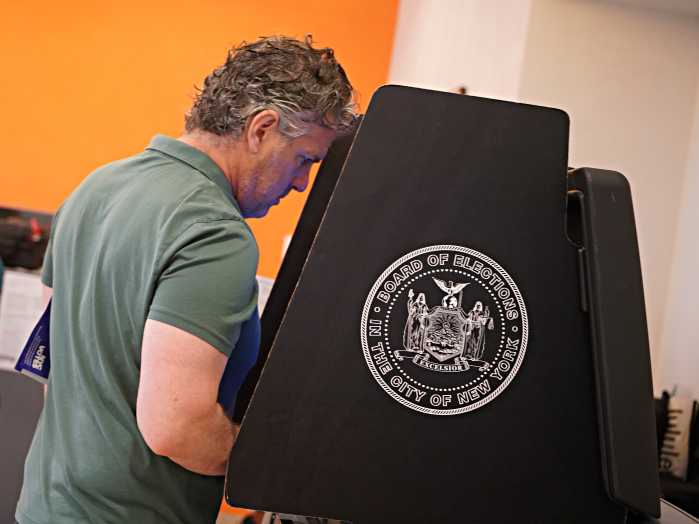Project is too big but has strong support at city level
The N.Y.U. plan to build four buildings on its two superblocks in the Village — which include the existing Washington Square Village and University Village — is grossly over-scaled for the neighborhood. That is clear.
But make no mistake, there is public support at the city level for New York University’s project, for the jobs it will create, and for its contribution to strengthening one of the city’s prime educational institutions. N.Y.U.’s plan has substantial support at City Planning, in the Bloomberg administration, and probably in the City Council, where the uniform land use review procedure (ULURP) will eventually be decided. This is important support and not likely to be swayed by vehement local opposition that many in the greater city and political class see as reflexively anti-N.Y.U. and over the top.
Before N.Y.U.’s 2031 planning project, begun in 2006, its history of “as-of-right” development in Lower Manhattan produced enormously unsatisfactory results for the community. It resulted in several monstrosities, including its E. 12th St. dorm, the largest building in the East Village. The community rightly for years clamored for a “master plan” from N.Y.U., so that N.Y.U.’s development could be channeled into appropriate areas with some predictability for Lower Manhattan.
N.Y.U. has produced a thorough plan, but its proposal in its central core area, to build 2.3 million square feet on its own land on the two superblocks (1.3 million square feet aboveground, and 1 million belowground) is simply too ambitious. It crams too much into too small an area, and must be scaled down.
But how to get N.Y.U. to scale down this plan is shaping up to be the most important battle that the Village and this community board will face in years. And the resolution of this issue will shape the future of the Village for decades.
C.B. 2 will make a mistake if it votes ‘unconditional and absolute no’ on project
We believe C.B. 2 will make a mistake if they follow the maximalists who have dominated the public meetings so far and vote to oppose this project absolutely and unconditionally. From a larger city vantage point, the maximalist opposition is playing exactly into a central casting stereotype of angry NIMBYs who want to protect their cherished and privileged corner of the world.
By voting the project down in its entirety, the board would play into the hands of those who support this massive overdevelopment. Voting a “total and absolute no” on N.Y.U.’s project would make it easier for the larger political world — i.e., the deciders in the Bloomberg administration, the Speaker’s office and the City Council — to marginalize them and overlook the community board.
Voting this project down in its entirety puts the whole burden of negotiating specific cutbacks in the plan on to Borough President Stringer and Councilmember Chin. The community board instead should strengthen the hand of elected leaders by weighing in on what it finds acceptable. Focusing on this task will give Chin and Stringer an important leg up in negotiating these changes with N.Y.U. and building support in the City Council for scaling back the project.
Scale the project back by half
In our view, a starting point would be the principle of “half.” C.B. 2 should be working on the best way to reduce this project by half.
Here is our preliminary take of the principle of “half”:
On the southern superblock, Coles gym is the easiest part. Its neo-penitentiary architecture is an abomination. Its replacement, the so-called zipper building, is the building that N.Y.U. should be permitted to construct. Its massing, however, should be reduced and shifted more toward Houston St. to alleviate the pressure on the properties facing it on the half-block between Houston and Bleecker Sts. The hotel atop the zipper building should be eliminated from the project.
The proposed school at the site of the Morton Williams supermarket should be put on a fast track. The community needs the school now (i.e., three to four years from now is the School Construction Authority’s lag time) and nobody believes that N.Y.U. will really build this school at some nebulous time after 2018. The ULURP for the project needs a firm resolution guaranteeing this school. Why not have N.Y.U. transfer the deed to the city with a strong deed restriction that it can only be used for a school?
The N.Y.U. proposed dorm on top of the school should be eliminated from the project. It enormously complicates the negotiations with the S.C.A. about building and phasing in the school. Far better for the city to own the land and build a school according to its logic and schedule. This takes N.Y.U. out of the school building and scheduling deliberations.
On the north superblock, N.Y.U. should either abandon the Mercer St. boomerang building permanently, or scale both boomerang buildings down by half.
This scaling-down should lead to an overall reduction in the project from 1.3 million square feet aboveground and 1 million square feet belowground to approximately 650,000 square feet up and 500,000 square feet down.
This spreads out N.Y.U.’s proposed project between the north and south superblocks — smaller zipper building in the south with no hotel, no dorm on top of the school, and 50 percent smaller boomerang buildings on the north superblock.
Community board must lead and produce road map for Stringer and Chin
There are dozens of other details to negotiate — the deed restrictions, future of the green strips, school deed transfer, massing of the buildings, placement of the parks, enhancing of the open spaces, etc. Hard work, indeed. We will see to what extent our local elected officials and community board leaders are able to focus on this, and produce results.
But the community board should not think that voting an “unconditional no” on the project strengthens the ability of our political leaders to get this project scaled back. It actually gives our elected leaders less legitimacy because they have no guidance from the community board on what to scale back.
Stringer and Chin should let the community board know that they expect results and a road map, not maximalist marginalization. C.B. 2 has shown enormous skill and political savvy in dealing with other complex land use and community issues. On this mega-issue, we hope community board members will lead, not marginalize themselves. Then, Stringer and Chin should work to build support at City Planning and the City Council for scaling back this project.































